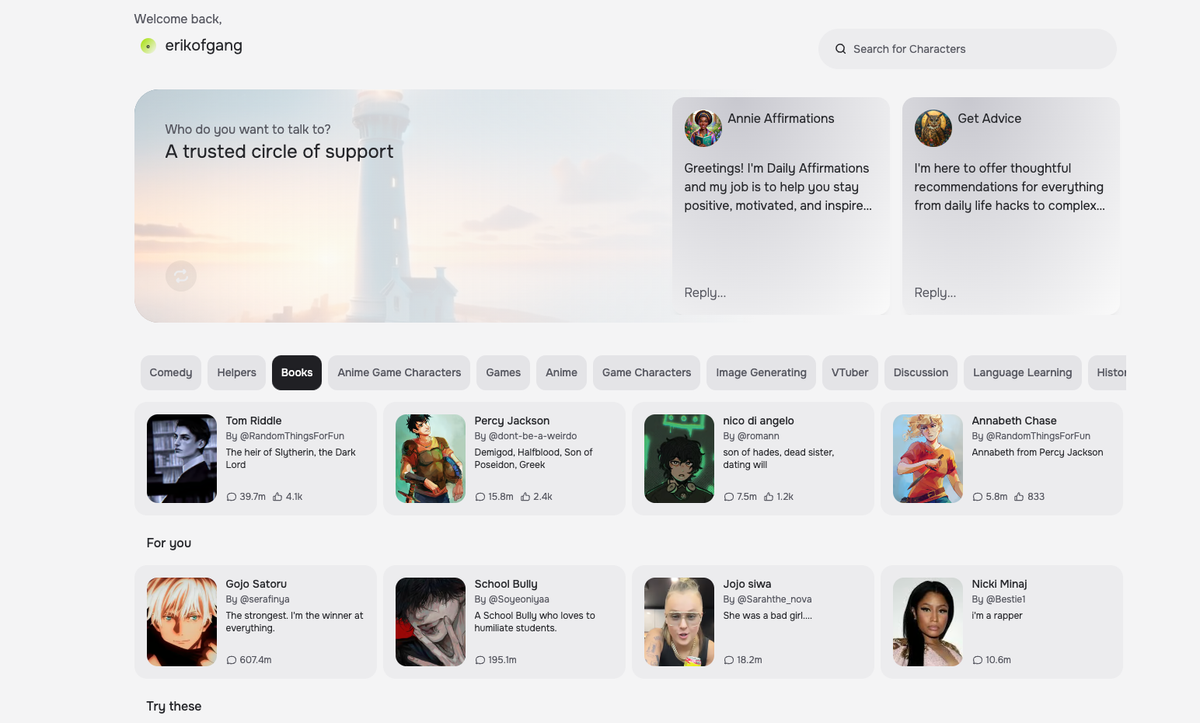Character.AI: What Teachers Need To Know
The character-driven generative AI is likely a hit with many of your students. Here’s what Character.AI does and its potential and limitations for teaching.

Character.AI is an generative AI tool that is really resonating with teens and young adults, says Elizabeth Radday, Ed.D. Director of Research & Innovation at EdAdvance, one of Connecticut's six Regional Educational Service Centers.
Radday is not the only one taking notice of the Character.AI app that gives users the ability to chat with historical figures, characters from TV shows, and even items such as a slice of toast. Google recently recruited Character.AI’s founder Noam Shazeer to co-lead Gemini, its main AI program. Shazeer had worked at Google prior to founding Character.AI. Google reportedly paid billions to get him back as part of a deal that also included a Character.AI licensing agreement. The move, however, makes Character.AI’s future as an independent app uncertain. After the Google move was announced, Character.AI laid off about 5% of its staff.
Regardless of its future role with Google, Character.AI does not yet have safety or privacy features in place to work for education, Radday says. However, she adds, it’s still something educators should be aware of because their students are using it, and it could play an interesting educational role in the future.
In addition to speaking with Radday about Character.AI, I experimented with the app myself. Here’s what educators should know.
What You Need To Know About Character.AI
Character.AI allows users, who can sign up for free, to talk to a variety of historical characters and fictional characters through a familiar chatbot interface.
Manga characters are very popular on the app, says Radday, who also co-hosts the ChatEdu at EdAdvance podcast. To research the app for education purposes she spoke with Jim Halpert from "The Office" and a pair of chicken fingers. The app even has a voice mode in which the characters will speak their responses. Users can also create their own characters and make them public so others can interact with them.
“I talked to Jim Halpert about pulling a prank on my coworker and it seems to match the tone and vibe of that person,” she says, adding it is different than trying to do something similar with another chatbot. “You can have ChatGPT play a role and say, 'Answer my questions as if you were Henry Ford or Harriet Tubman.' But something about Character.AI just makes it a little more character-driven.”
Tech & Learning Newsletter
Tools and ideas to transform education. Sign up below.
Using Character.AI, I asked Gandalf The Grey for work-life advice, but he gave me mostly standard hallmark card tips — “Make time each day for something fun.” But I was impressed with the quality of his voice, which seemed like the voice of a character from a video game, and easily saw how young people might enjoy this app. It’s clearly designed to be more fun than some of the other AI generative tools out there. However, young people are using it for more than fun and games.
“People are really into it end up having pretty intense conversations whether it's with characters they've created or characters other people have created,” Radday says.
Potential For Education
Privacy issues currently limit the use of the app in education settings, Radday says. “A teacher can't go into school and be like, ‘Hey, everybody sign up for Character.AI, and go talk to George Washington.’”
She adds, “That doesn't mean we don't see the value there, and perhaps it growing and becoming something that schools can use, or using this model to build a safe-for-school use where kids can go and have conversations with historical figures, book characters, [etc.].”
From my experiments with Character.AI, I found the character creation tool to be the most fun. I used it to forge a character based on one in a fictional novel I have started to toy with writing. The tool didn’t build the character as I envisioned him, but speaking with it was an interesting brainstorming exercise and gave me some ideas to explore. I could definitely see using this with students in a creative writing class for this purpose. Of course, privacy concerns need to be addressed before that can happen.
In the meantime, I agree with Radday that it is a tool that teachers should know about and should consider when discussing generative AI, and when teaching digital literacy.
Radday notes that not everything about this app is positive, however. “Kids are now moving beyond spending hours in their room watching TikToks and chatting with friends. They're now chatting with chatbots for hours,” she says. “There's not even another actual human on the other end. And some of these chats can get not safe for work, not safe for school, in a variety of ways, and I think that's a real concern.”
Erik Ofgang is a Tech & Learning contributor. A journalist, author and educator, his work has appeared in The New York Times, the Washington Post, the Smithsonian, The Atlantic, and Associated Press. He currently teaches at Western Connecticut State University’s MFA program. While a staff writer at Connecticut Magazine he won a Society of Professional Journalism Award for his education reporting. He is interested in how humans learn and how technology can make that more effective.











